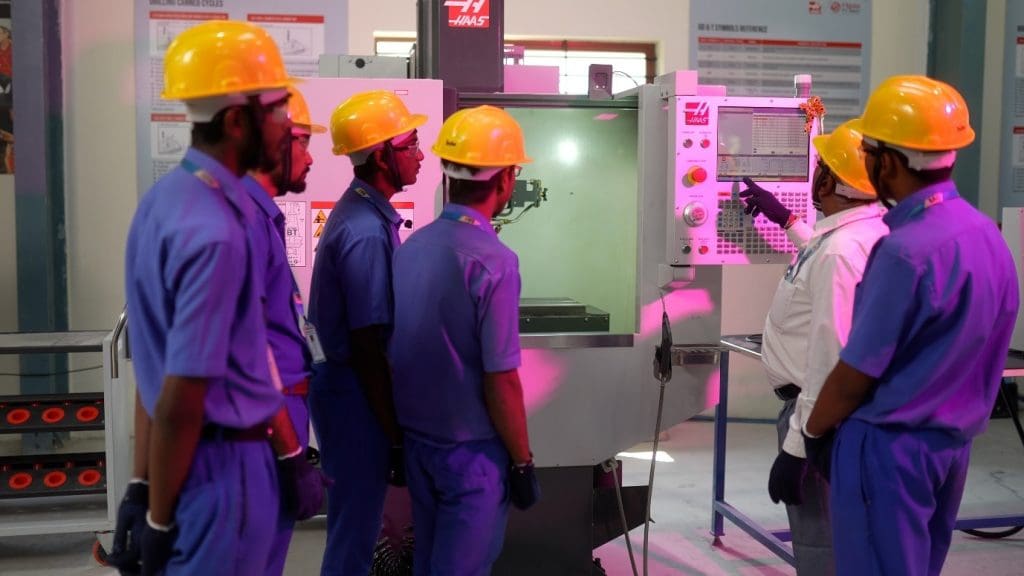Ms. Amrutha Girish Executive Manager – Karnataka Skill Development Corporation, Government of Karnataka

The National Education Policy (NEP) 2020 envisions a ‘complete reimagination of how vocational education is offered to students’. The Pradhan Mantri Kaushal Vikas Yojana (PMKVY) 4.0 has, through the ‘Skill Hub’ initiative, laid out a revamped framework for the mainstreaming of vocational training and its integration with the general education. Academic institutions will be onboarded as training partners in the Skill India network to impart market-relevant, future-oriented vocational skills to students as well as unemployed youth.
Below are some of my thoughts on the various factors that can contribute to effective implementation of this vision.
- Who is the target beneficiary? While the NEP heralds a new chapter in the Indian education system for all students, one must ask who will benefit the most from the vocationalization of education and how can the ecosystem adapt around the needs, challenges, and aspirations of this group. NEP calls for an education that imparts at least one vocational skill to the student, thereby ensuring that every individual who joins the workforce is skilled. The system should go one step further and ensure that the skill thus imparted is relevant for the intended group to build its livelihood on in this evolving job market.
- Leveraging the teacher’s influence for career guidance: As rightly recognized by NEP, vocational exposure in the formative years is essential. Vocational education can become aspirational only when the primary stakeholders – students, parents and teachers recognize it as such.
To do so, the students must be empowered to make informed career choices. As teachers hold immense influence on students’ impressionable minds, they must be first sensitized to impart proper guidance to the students on the various pathways at the disposal of the student, and the flexibility and mobility between vocational and general education that is made available under NEP.
- Trainers vis-a-vis Teachers: Although it seems ideal for the teacher or lecturer to double up as a trainer, one needs to examine if it is feasible given the hefty workload most faculty members already carry apart from the non-teaching responsibilities such as administrative work and in the case of government teachers, even non-academic work.
Teachers may then, understandably, end up sidelining vocational training as they face the pressure of completing the syllabus of academic subjects.
Also, training requires additional capabilities that the teachers can build only through additional training – again an activity that requires dedicated time set aside for capacity building. It is thus most likely that more accessible institutions with greater resources will partner with industries or skilling partners who can arrange for the experts. At other institutions, government may have to deploy dedicated trainers.
- Creative redesign of curriculum: As NCERT and its regional counterparts begin to redesign academic curriculum in a ‘light and tight’ manner that focuses on core competencies and sieving the unnecessary, the apex institutions in the skilling ecosystem – NCVET, NSDC, SSCs must also revise the NSQF content and curriculum to make it more relevant and palatable to the consumers viz. the young students.
a. The first step would be to reconsider the hours, content, and modules of the existing job roles for the target audience.
b. Once the content is revised, modules may be designed and developed for multimedia – creative presentation on print, animation for digital modules, prompts for roleplays, suggested deliverables through hands-on project work and so on.
c. More the pedagogical resources, better it is for the users of the content at the institution level to deliver the programme en masse and at scale.
- Onus on the community: Every citizen must realize that the clock is ticking. Our window of opportunity in capitalizing our demographic advantage will close without commensurate benefit if we do not take the right steps now. While government will continue to take the lead in policy design, planning of implementation and monitoring of outcomes, other stakeholders must also pitch in.
a. Resource constraint at the institution level is often cited as a key impediment for implementation of NEP. However, there have been many examples of community participation for promoting good practices in education, rural development, and healthcare. The same must be applied to vocational training.
b. Local industries must adopt schools to cater to infrastructure and human resource gaps for training.
c. Non-profits must facilitate the pooling of community resources.
d. Local philanthropists can fund digital infrastructure needs.The list of suggestions doesn’t end here, but these factors may be considered for the community to drive this national priority.


